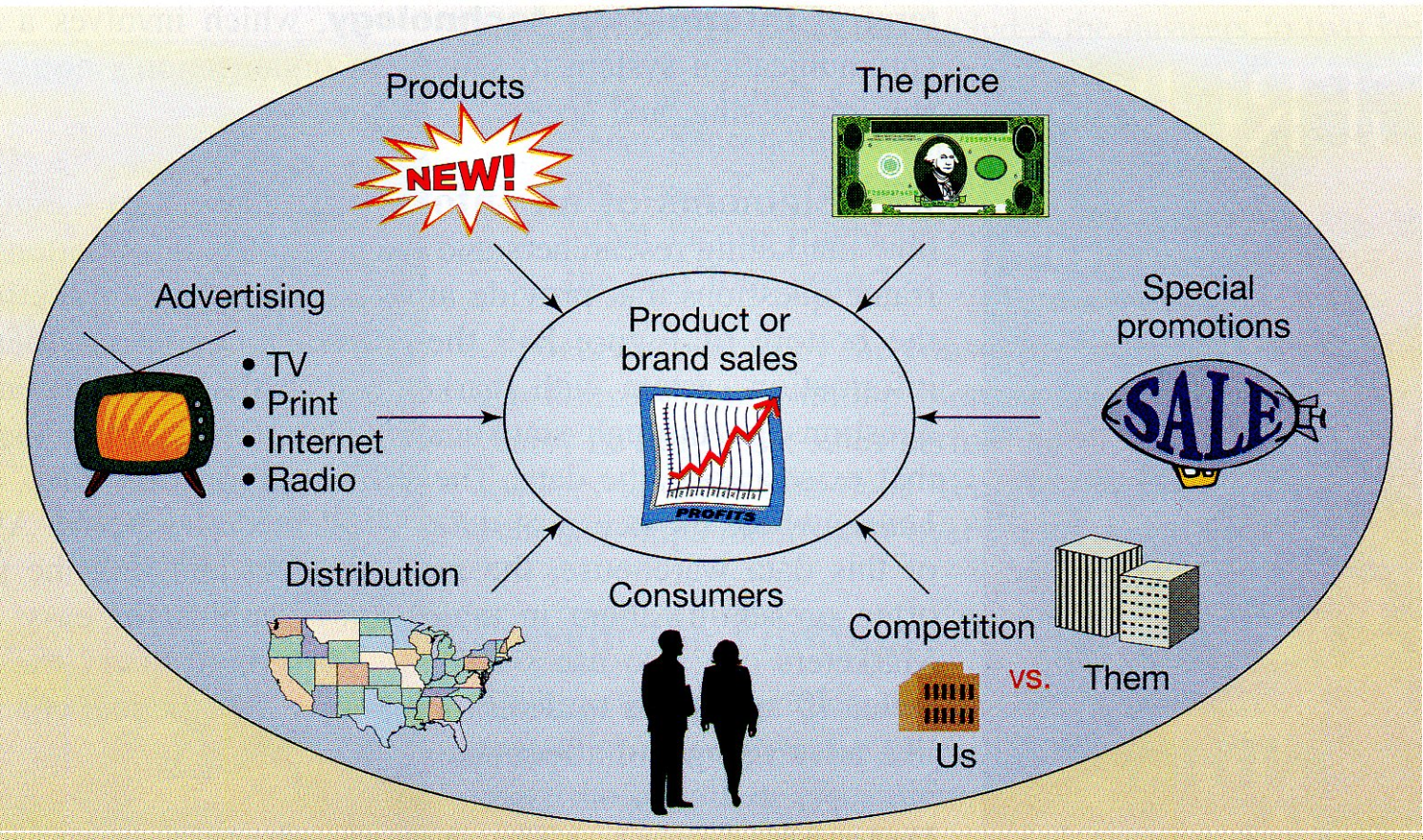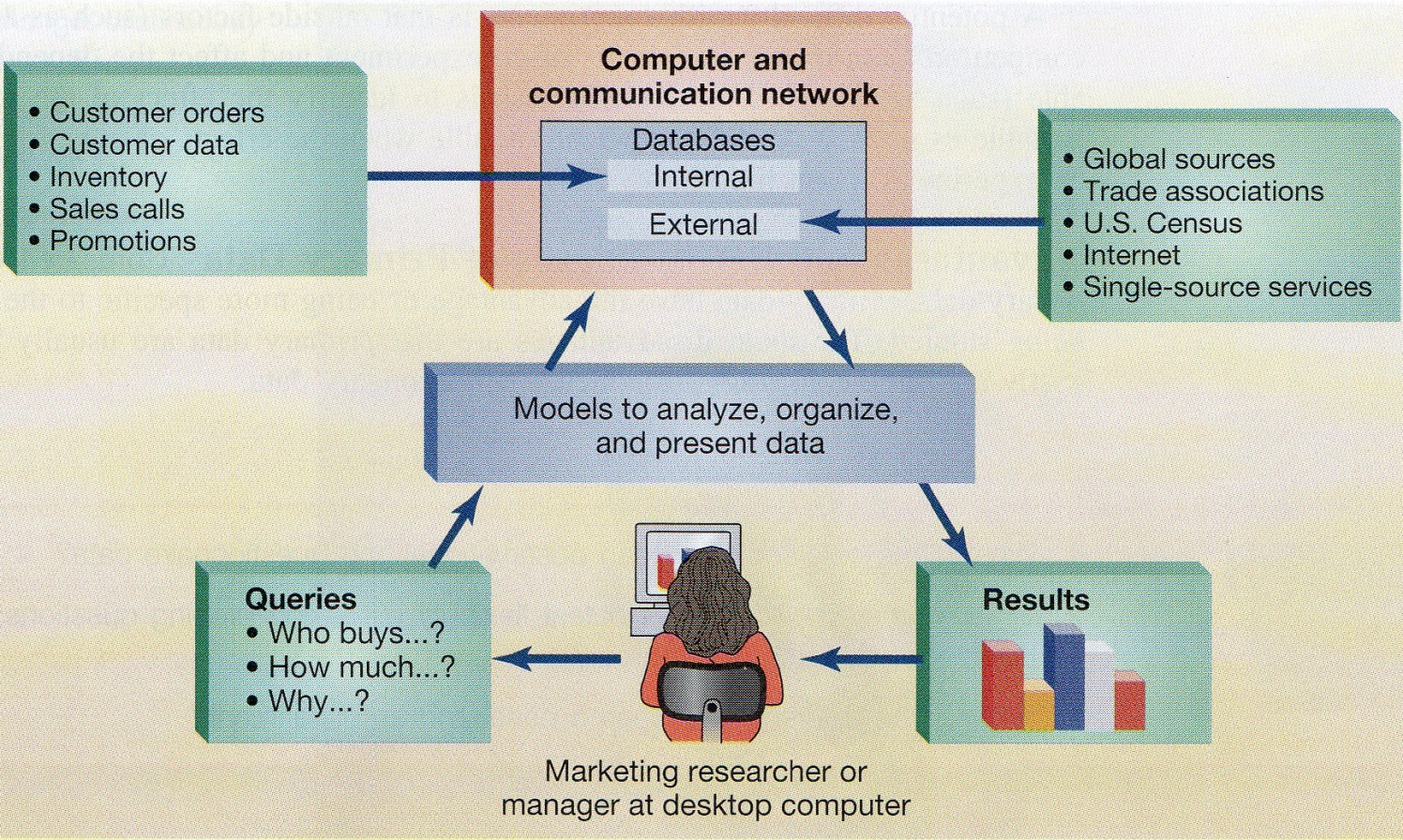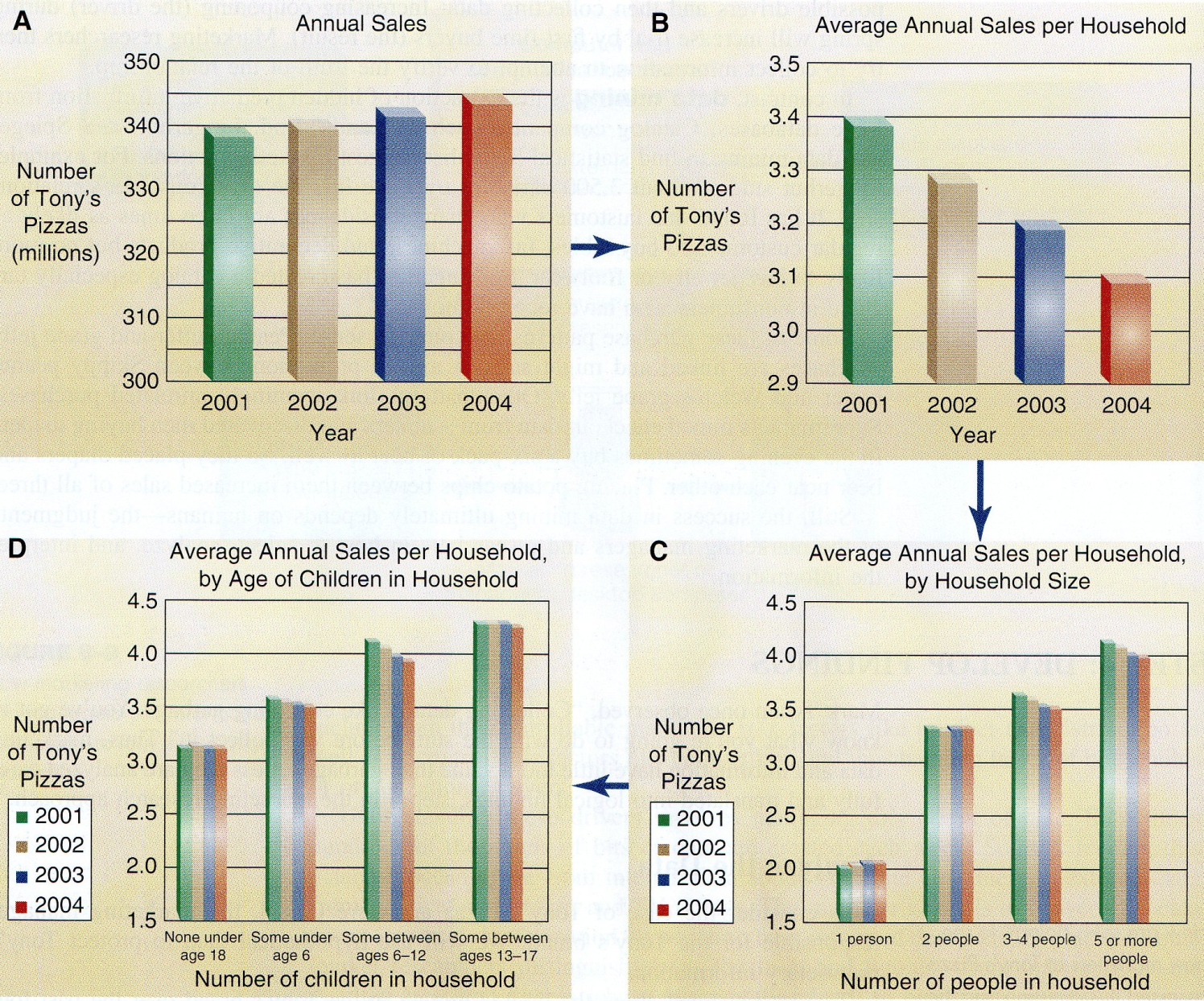
- •Marketing research: From Information To Action
- •The role of marketing research
- •What is Marketing Research?
- •Why good marketing research is difficult?
- •Five-step marketing research approach to making better decisions
- •Identify Possible Marketing Actions
- •Identify Data Needed for Marketing Actions
- •Internal Secondary Data
- •Using Information Technology to Trigger Marketing Actions
- •Implement the Action Recommendations
- •Chapter in review
- •Identify the reason for doing marketing research, and describe the five-step marketing research approach leading to marketing actions.
- •Describe how secondary and primary data are used in marketing, including the uses of questionnaires, observations, experiments, and panels.
- •Explain how information technology and data mining link massive amounts of marketing information to meaningful marketing actions.
- •Focusing on key terms
- •Introduction Neuroscientific Contributions to Marketing Research
- •Selected Neurophysiological Methods for Marketing Research
- •Using the Frontal Asymmetry Paradigm to Assess Emotions in Advertising Theoretical Background
- •The Frontal Asymmetry Paradigm in Televised Advertising Tests
- •Measures of Visual Attention Using Eye-Tracking History and Theoretical Background
- •Selected Research Areas
- •Eye Tracking in Market Research
- •Integration with eeg: What Do People Feel When They Look? Shortcomings in Standalone Applications
- •The Integrated Approach
- •Implications for Interactive Advertising New Opportunities for Research
- •Challenges
- •Concluding Remarks
- •Footnotes
- •References
- •About the Authors
Using Information Technology to Trigger Marketing Actions
Today’s marketing managers can be drowned in such an ocean of data that they need to adopt strategies for dealing with complex, changing views of the competition, the market, and the consumer. The Internet and the PC power of today provide a gateway to exhaustive data sources that vary from well organized and correct to disorganized and incorrect.
The Marketing Manager’s View of Sales Drivers
Figure 8 shows a marketing manager’s view of the product or brand “drivers,” the factors that influence buying decisions of a household or organization and, hence, sales.
These drivers include both the controllable marketing mix factors like product and distribution as well as uncontrollable factors like competition and the changing tastes of households or organizational buyers.
FIGURE 8
Product and brand drivers: factors that influence sales

Understanding these drivers involves managing this ocean of data. Sometimes hundreds of thousands of bits of data are created each week. Sources feeding this database ocean range from internal data about sales and customers to external data from syndication services and TV ratings. The marketer’s task is to convert this data ocean into useful information on which to base informed decisions. In practice, some market researchers distinguish data - the facts and figures - from information - the distilled facts and figures whose interpretation leads to marketing actions.
Current information about products, competitors, and customers is almost always accessed and analyzed by computer. So today, these activities fall under the broader term of information technology, which involves a computer and communication system to satisfy an organization’s needs for data storage, processing, and access.
Key Elements of an Information System
Figure 9 shows how marketing researchers and managers use information technology to frame questions that provide answers leading to marketing actions. At the bottom of Figure 9 the marketer queries the databases in the information system with marketing questions needing answers. These questions go through statistical models that analyze the relationships that exist among the data. The databases form the core, or data warehouse, where the ocean of data is collected and stored. After the search of this data warehouse, the models select and link the pertinent data, often presenting them in tables and graphics for easy interpretation. Marketers can also use sensitivity analysis to query the database with “what if’ questions to determine how a hypothetical change in a driver like advertising can affect sales.
FIGURE 9
How marketing researchers and managers use information technology
to turn information into action

Data Mining: A New Approach to Searching the Data Ocean
Traditional marketing research typically involves identifying possible drivers and then collecting data: Increasing couponing (the driver) during spring will increase trial by first-time buyers (the result). Marketing researchers then try to collect information to attempt to verify the truth of the relationship.
In contrast, data mining is the extraction of hidden predictive information from large databases. Catalog companies such as Lands’ End, Fingerhut, and Spiegel use data mining to find statistical links that suggest marketing actions. For example, Fingerhut studies about 3,500 variables over the lifetime of a consumer’s relationship. It has found that customers who change residences are three times as likely as regular customers to buy tables, fax machines, and decorative products but no more likely to buy jewelry or footwear. So Fingerhut has created a catalog especially targeted at consumers who have recently moved.
Some of these purchase patterns are common sense: Peanut butter and grape jelly purchases are linked and might suggest a joint promotion between Skippy peanut butter and Welch’s grape jelly. Other patterns link seemingly unrelated purchases: Supermarkets mined checkout data from scanners and discovered men buying diapers in the evening sometimes buy a six-pack of beer as well. So they placed diapers and beer near each other. Placing potato chips between them increased sales of all three.
Still, the success in data mining ultimately depends on humans - the judgments of the marketing managers and researchers in how to select, analyze, and interpret the information.
Text 6
STEP 4: DEVELOP FINDINGS
Mark Twain once observed, “Collecting data is like collecting garbage. You’ve got to know what you’re going to do with the stuff before you collect it.” Thus, marketing data and information have little more value than garbage unless they are analyzed carefully and translated into logical findings, step 4 in the marketing research approach.
Analyze the Data
Let’s consider the case of Tony’s Pizza and Tere Carral, the marketing manager responsible for the Tony’s brand. We will use hypothetical data to protect Tony’s proprietary information.
Teré is concerned about the limited growth in the Tony’s brand over the past four years. She hires a consultant to collect and analyze data to explain what’s going on with her brand and to recommend ways to improve its growth. Teré asks the consultant to put together a proposal that includes the answers to two key questions:
How are Tony’s sales doing on a household basis? For example, are fewer households buying Tony’s pizzas, or is each household buying fewer Tony’s? Or both?
What factors might be contributing to Tony’s very flat sales over the past four years?
Facts uncovered by the consultant are vital. For example, is the average household consuming more or less Tony’s pizza than in previous years? Is Tony’s flat sales performance related to a specific factor? With answers to these questions Teré can identify actions in her marketing plan and implement them over the coming year.
Present the Findings
Findings should be clear and understandable from the way the data are presented. Managers are responsible for actions. Often it means delivering the results in clear pictures and, if possible, in a single page.
The consultant gives Teré the answers to her questions using Figure 10, a creative way to present findings graphically.
Let’s look over the shoulders of Teré and the consultant while they interpret these findings:
Figure 10A, the chart showing Annual Scale. This shows the annual growth of Tony’s Pizza brand is stable but virtually flat from 2001 through 2004.
Figure 10B, the chart showing Average Sales per Household. Look closely at this grath. At first glance, it may seem like sales in 2004 are half what they were in 2001, right? But be careful to read the numbers on the vertical axis. They show that household purchases of Tony’s have been steadily declining over the past four years, from an average of 3.4 pizzas per household in 2001 to 3.1 pizzas per household in 2004. (Significant, but hardly a 50 percent drop.) Now the question is, if Tony’s annual sales are stable, yet the average individual household is buying fewer Tony’s pizzas, what’s going on? The answer is more households are buying pizzas – it’s just that each household is buying fewer Tony’s pizzas. That households aren’t choosing Tony’s is a genuine source of concern. But again, here’s a classic example of a marketing problem representing a marketing opportunity. The number of households buying pizza is growing, that’s good news for Tony.
Figure 10C, the chart showing Average Annual Sales per Household, by Household Size. Oh, Oh! This chart starts to show a source of the problem: Even though average sales of pizza to households with only one or two people is stable, households with three or four people and those with five or more are declining in average annual pizza consumption. Which households tend to have more than two people? Answer: Households with children. Therefore, we should look more closely at the pizza-buying behavior of households with children.
Figure 1OD, the chart showing Average Annual Sales per Household, by Age of Children in the Household. Oh, oh, oh! The picture is becoming very clear now: The real problem is in the serious decline in average consumption in the households with younger children, especially in households with children in the 6- to 12-year-old age group.
Identifying a sales problem in households with children 6- to 12-years-old is an important discovery, as Tony’s sales are declining in a market segment that is known to be one of the heaviest in buying pizzas.
FIGURE 10
Presenting findings to Tony’s marketing manager
that lead to recommendations and actions

Text 7
STEP 5: TAKE MARKETING ACTIONS
Effective marketing research doesn’t stop with findings and recommendations— someone has to identify the marketing actions, put them into effect, and monitor how the decisions turn out, which is the essence of step 5.
Make Action Recommendations
Teré Carral, the marketing manager for Tony’s Pizza, met with her team to convert the market research findings into specific marketing recommendations with a clear objective: Target families with children ages 6 to 12 to reverse the trend among this segment and gain strength in one of the most important segments in the frozen pizza category. Her recommendation is to develop:
An advertising campaign that will target children 6 to 12.
A monthly promotion calendar with this 6 to 12 age group target in mind.
A special event program reaching children 6 to 12.
